Wednesday morning we got up early but not too, with a 9:30 train to meet and that. Boarding started at 9:00, but we stood around for a while so I could take pictures of the train before ours, waiting at the station.

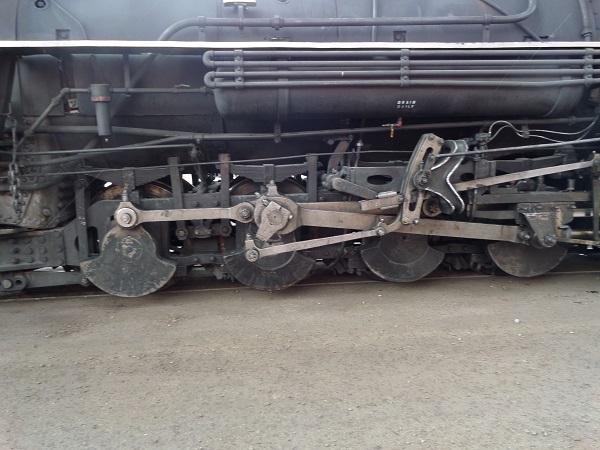
To fit onto a three-foot track, the locomotive driving wheels are inside the frame. The counterweights go on the outside; they’re intended to balance the rocking action of the drive rods. They are ridiculously massive, and indicate the amount of force being applied to pull the loco and the train.
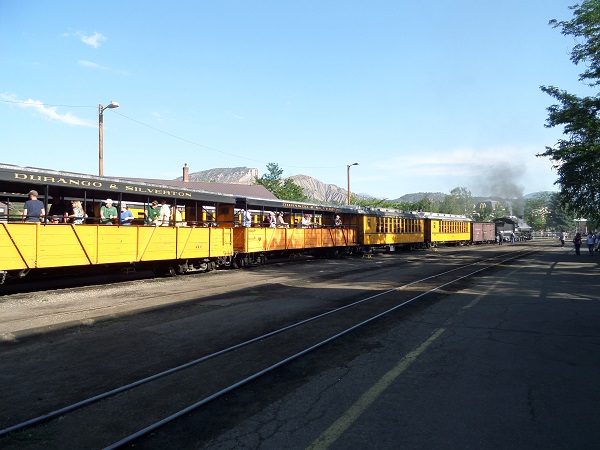
We had intermediate seating, not parlor car, but day car (at right) and definitely better than the ones riding the open-air bench seats in the gondolas at left.
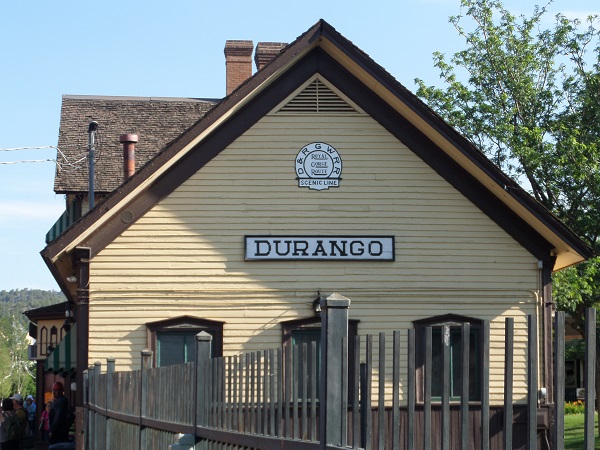
The D&SNG has done a pretty thorough job of getting rid of the old D&RGW name and logo, but you can still find the original logo in a couple of places—the ends of the Durango station, and the end panels of the boxcars. Still, they do use D&SNG instead of D&S to remind people of the earlier road.
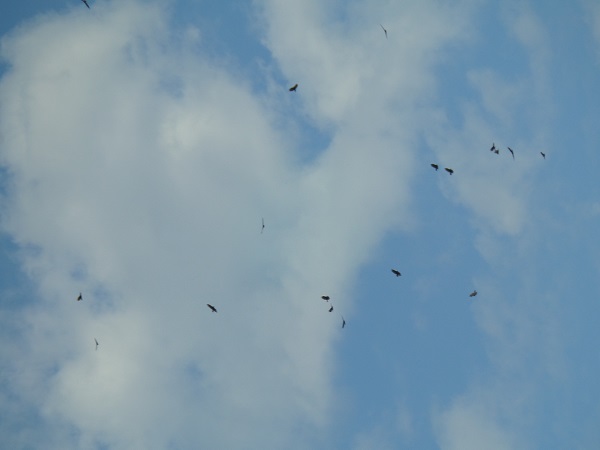
We saw a flock of buzzards circling over something dead up the ridge, the first ones we had seen since we left Texas a week and a half ago.
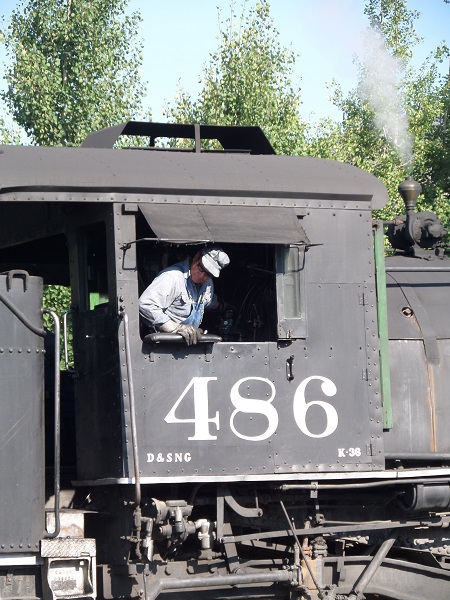
Backing up the engine to hook it to the rest of the train. The engineer sits on the right-hand side of the cab, a left-over from the beginnings of British locomotion, when everything traveled in a left-hand traffic pattern.
We left pretty much to time, and once out of town got up to our traveling speed, a grand fifteen miles an hour, guaranteed to get us to Silverton in time for a late lunch. The track ran as close to the Ánimas river as it could get (it actually crosses the river five times in 45 miles), to take advantage of the low ground and avoiding the need to climb grades.
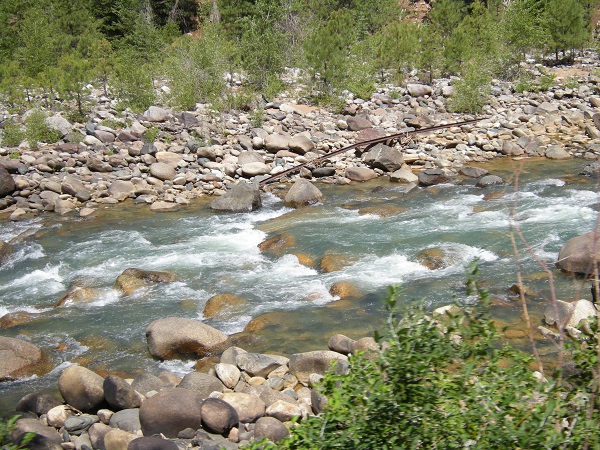
Often we were running right along the river bank, and at intervals would see old rails in the bed of the river, put there by floods or avalanches. The current track uses rail weighing eighty-five pounds to the yard; the old rails in the river were fifty and sixty pound rail. (Heavy-use main line rail can go up to 130 pounds per yard.)
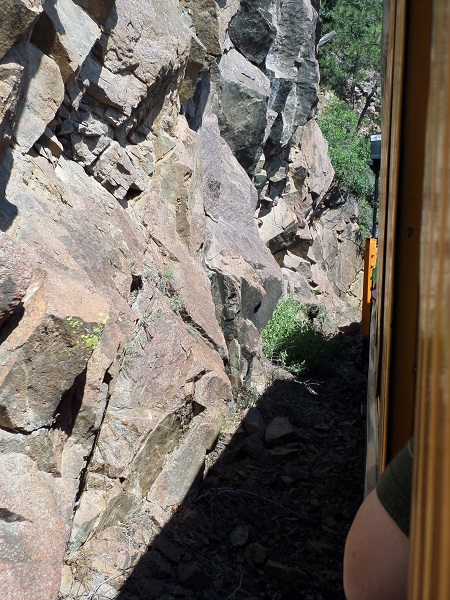
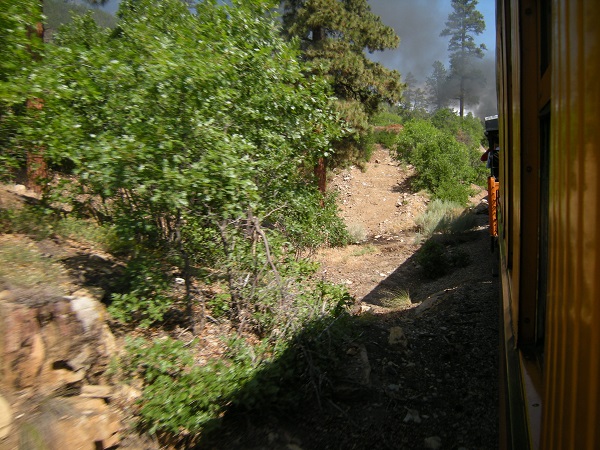
The line provided a great example of why three-foot gauge track was used in the mountains: space. It takes a lot less dynamite and a lot less fill to build a three-foot gauge line than it does to build a standard line of four feet, eight and a half inches. The line wound through places where you could reach out and touch the sheer granite walls or foliage as they went past—not that this was encouraged, for fear of people losing phones, cameras, fingers or hands. There were “KEEP HANDS INSIDE THE CAR” signs all over.
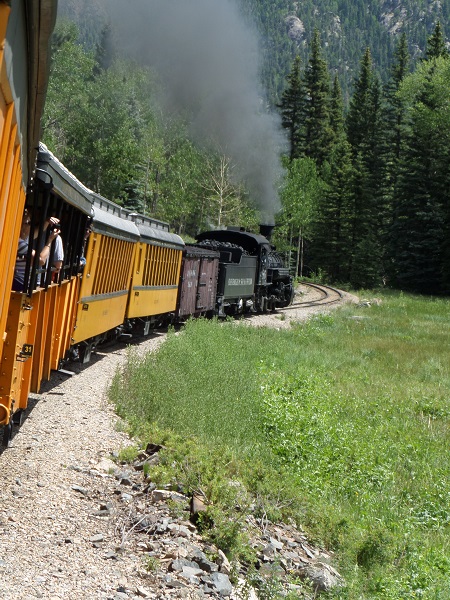
As we wound along, I could sometimes catch glimpses of the head end of the train rounding a curve. No, you’re not drunk—the curve really is banked like that, and the cars are tilting. There was a lot of that.

The forest around Durango is a mixture of fir, blue spruce, aspen, and piñon, with the occasional juniper thrown in for variety. Little springs and creeks ran everywhere, an amazing sight after living so long in our own drought-stricken country. At that, Colorado isn’t doing well either. A Forest Service employee riding on the train as a docent told us that the river was running at only twenty percent of normal, and he hadn’t seen it so low in many years.
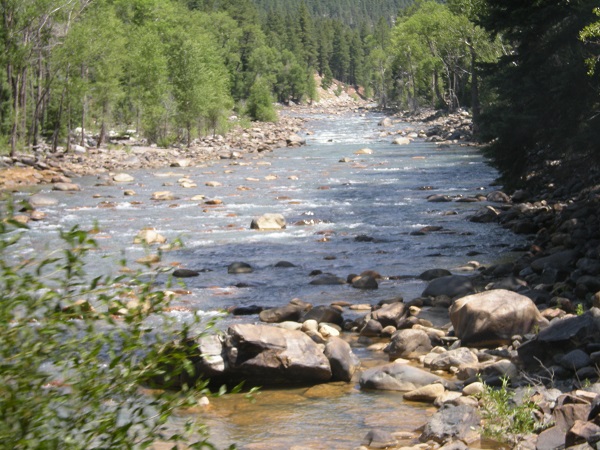
This is a bit of the less steep-like-whoa gorge. All those rocks you see sticking out of the river? They’re supposed to be under several feet of water. Snowmelt came early this year. By this point the snow that ought to be feeding the rivers has been gone downstream for months.
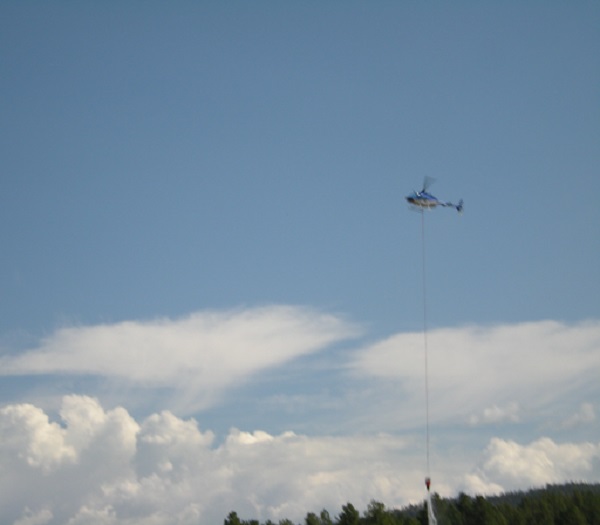
We had to stop at one point to let firefighters work on a small fire near the tracks. There was a helicopter hovering over us at a couple of places, letting down a bucket on a long line to dip water out of the river and go drop it onto the fire. It was a “bucket” only for certain values of the word; it held 150 gallons. Each train carries a boxcar with it as the first car behind the tender; the car holds fire fighting equipment for the railroad employees’ use, in case a flying ember from the smokestack set a fire, despite the spark-arrester bonnets on the stack of each engine.
As we rolled along, the engineer periodically sounded the whistle. Sometimes it was obvious why: a crossing, or a whistle sign by trackside. Other times, though, there was no obvious reason to do it, and I decided that sometimes he just let off the whistle for the noise of it, and the echo.
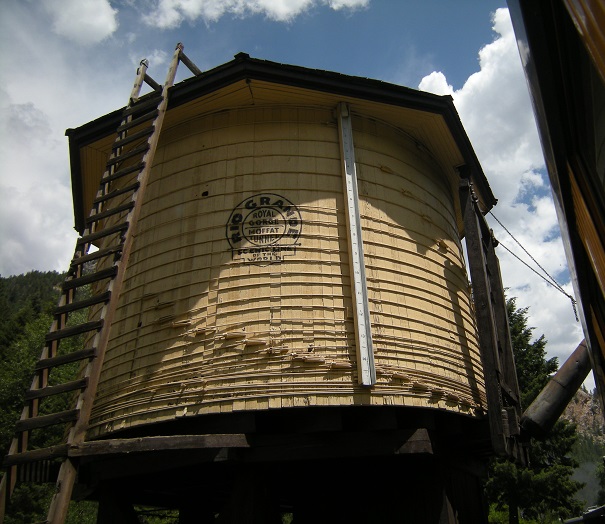
At the ghost town of Needleton, we stopped to take on water. Not from this tank, unfortunately—despite its spruced-up appearance, it’s been out of service since the 1960s. Water actually comes from a decommissioned tank car set at trackside.
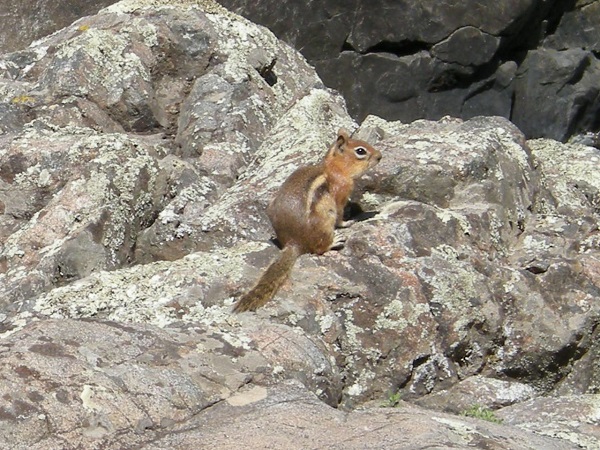
At another point, a golden-mantled ground squirrel (which we first mis-identified as a chipmunk) posed for M’s camera.
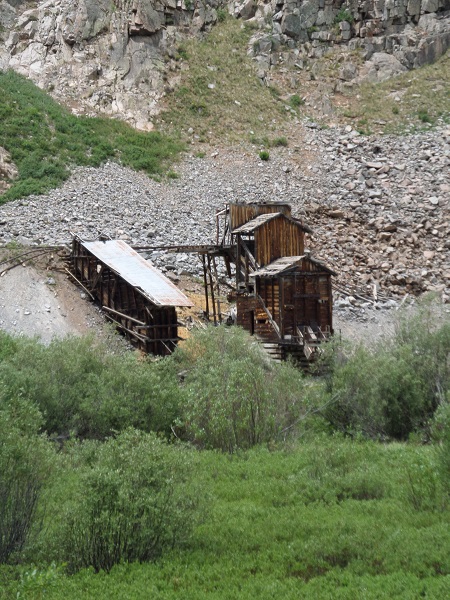
So this went on for more than three hours. Finally we started to approach Silverton, and saw the remains of abandoned mine workings like this. We learned later that although commercial mining ended some years ago, there are privately owned mines that are still being worked by their owners. If you have $15 for a Colorado mining permit and work on the mine for at least three weeks per year (or spend $2,000 on improvements) you can mine more or less indefinitely.
And we got to Silverton, just in time for (1) lunch and (2) a rainstorm. Fortunately, the worst of the rain held off until we were inside Natalia’s 1912 Restaurant, operated in a former bordello (well, a lot of surviving buildings in Silverton were bordellos at one time or another). After lunch we had a few minutes before our bus back to Durango was due to leave, so we dropped in at the blacksmith’s, who turned out not to have any actual smithing going on. Instead, he had a bunch of art-metal pieces for sale.
The bus left for Durango at 3:00, the same time as the return train, but we got back at 4:30, while the train took until six. Our driver was a school teacher from Aztec working a summer job, who proved to be a good tour guide and kept us partly distracted from the OMFG STEEP AND WINDING road which was OMFG STEEP AND WINDING. Even L admitted to being unnerved enough to decide that she was not going to try driving over the 10,000 foot Wolf Creek pass to get back to Texas. (Instead, we went back through northern New Mexico, avoiding all the high passes.) The bus driver also explained the lack of highway guard rails: rails hinder the snow plows from pushing snow off the road and down the hill, which is the only place available to push it, so no guard rails.
On the way into town L noticed a restaurant called SERIOUS TEXAS BAR-B-Q which sounded like a good idea because we’ve been gone from Texas for two weeks and there IS no barbecue in California worth mentioning and BARBECUE! So we went, and it was good. They served the meat on butcher paper like the best places do, and they had all the right sides (pinto beans, potato salad, coleslaw, white bread), and the brisket was just fatty enough and cooked to tenderness, and they serve Meyer’s Elgin sausage and OMG REAL BARBECUE. In Colorado. L took off a couple of points for no beef ribs, but no beef ribs is her perennial complaint about BBQ joints, even those at home.
And after that we went back to the motel, full of good barbecue and all, and I wrote up the blog entry for days ten and eleven, and finally went to sleep to get ready to go to Amarillo by morning Thursday.

2 Responses to Go west, young man: 2013 vacation, Day 12